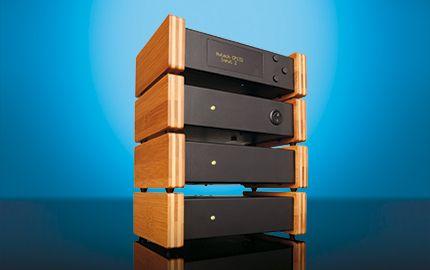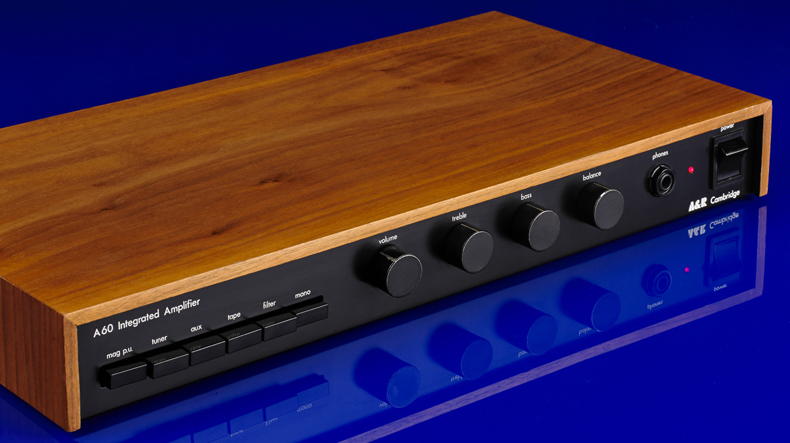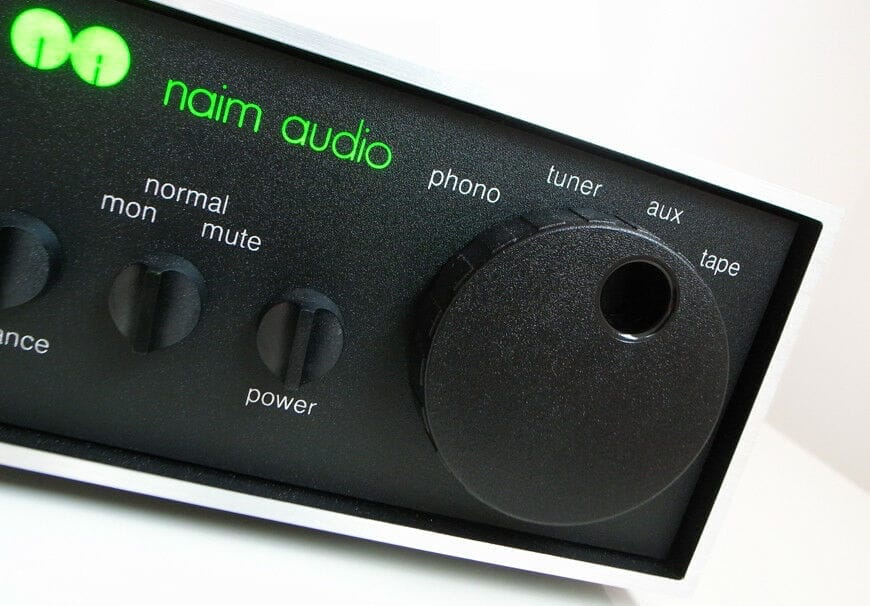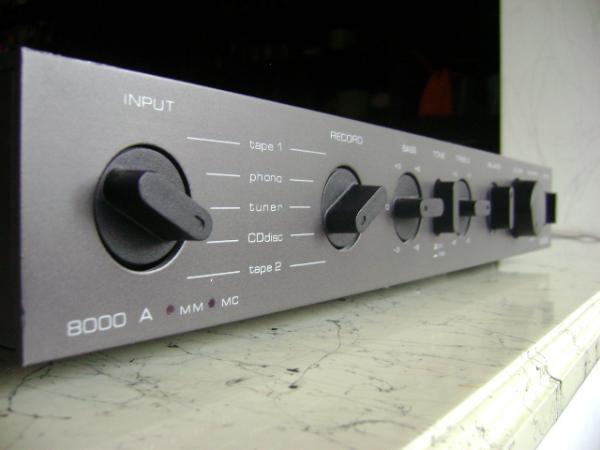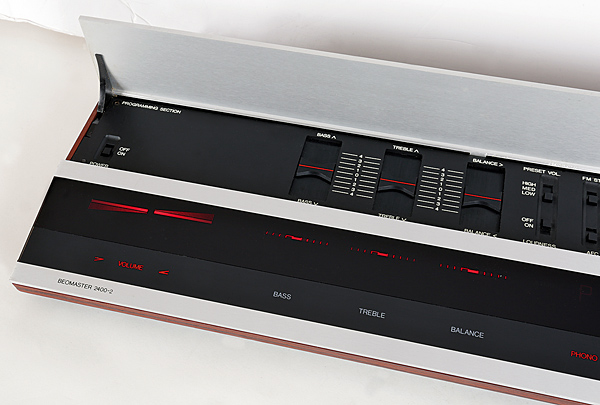Richard Hay, a man who served his audio apprenticeship with the highly regarded Arthur Radford and Arthur Bailey at Radford Electronics, founded Nytech in the early 1970s. His company produced well-regarded mid-market equipment for about fifteen years before circumstances combined to put an end to it. But, because to a bizarre set of events, the company’s DNA has lately resurfaced in Heed products, and even more of it has appeared recently.
Nytech’s first test engineer, Phil Balaam, worked closely with Hay, studying every detail of the company’s fine-sounding devices. When the company went out of business in 1989, he transferred to BBC Wales to work as a senior engineer, leaving his hi-fi career behind. After twenty-five years, he’s returned with a new Nytech product line, the first of which includes the preamplifier and monoblock power amplifiers shown here. A digital crossover, DAC, phono stage, and Raspberry Pi-based music streamer are all likely to follow, all in the same gorgeous tiny bamboo-adorned boxes.
While these are new, clean-sheet designs, Phil is quick to point out that they do have Nytech DNA in the know-how that Richard Hay personally taught him during his years at the original company. Phil’s skilled mentor is responsible for everything from the basic circuit topology and physical layout to the power supply type and quality, as well as the passive component selection. The new Nytech was founded with the blessings of both Richard Hay and his son Robert, who sadly passed away lately. He’s keen to revive the company’s ‘value for money hi-fi’ attitude, but he’s wary of high-end hi-fi. And, because he’s a big believer in openness, he’ll be sharing the circuit diagrams for his new electronics, as well as the source code that controls the preamp, so others may tweak it to their liking.
The CP132 control center/preamplifier (£676), CPS102 power supply (£300), and two CPA401 monoblock power amplifiers (£498 each) make up the new £1,972 Nytech Audio system. He picked mini-separates over an all-in-one integrated amplifier because of the sound benefits of breaking the component parts up, as well as the versatility. Phil’s other love, as you might assume given his professional broadcast background, is active loudspeakers. This means an electronic crossover is on the way, and in the meanwhile, he’s teamed up with Ingo and Klaus of Nero Audio in Germany to reintroduce the historic British ARC loudspeaker brand, which was known for its great active speakers built to work with Nytech electronics.
Phil is happy to produce in Ystrad Mynach, South Wales, where the new Nytech Audio is headquartered. He has used as many local suppliers, subcontractors, and components as possible. Even the great furniture producer Quadraspire, which makes the lovely bamboo end cheeks, is located close across the Bristol Channel in Somerset. The casings are pressed steel with a crackle black finish (a la MGB dashboards), and while they aren’t very ornate, the metalwork is of a high level, and the beautiful woodwork is a nice touch. More praise is due to the lack of blue LEDs; not a single one can be found. Instead, the power LEDs flash a reassuring shade of classic Nytech green after the kit has stabilized!
The circuits aren’t exactly like the originals, but the theory behind component selection, layout, and earth paths, for example, is “pure Richard Hay,” according to Phil Balaam. Apart from the volume control, which is a digitally controlled audio law attenuator, the preamplifier is an active design that uses all-discrete components in the audio section. It also employs a microcontroller that can be easily programmed (it was designed for instructional purposes), allowing dealers or even customers to customize the display. The source code and instructions for doing so will be available for free on the website. The power amp is built on a Texas Instruments audio integrated circuit, which Phil describes as “one of the nicest I’ve ever heard.” It claims to pump out 40W RMS per channel into 8 ohms and twice that into 4, and construction procedures are carefully considered to assure lifetime.
Nytechs were known for their easygoing, rhythmic sound, which combined a warm, smooth tonality with a lot of speed, dynamic accenting, and vitality. It was an especially delightful mix back when Naim amplifiers were more forward, in-your-face, and tonally expressive. The new CPA132/CPS102/CPA401 combination is best described as providing a traditional sound in a more modern setting, preserving the classic products’ tonal balance on the “warm side of neutral,” but leaning somewhat closer to neutral.
The midband of the new Nytech combo is open and explicit, with an incredibly broad and deep soundstage. Where the Creek integrated is wonderfully expansive, the Nytech goes even further and extends far beyond the physical bounds of the speakers, assertively hanging the elements of the mix in space. The recorded acoustic unfolds like a picture book, allowing you to simply focus on different musical threads. Perhaps it’s because of the physically distinct dual mono construction, but this set sounds significantly more spacious than you’d think for the money. It demonstrates the amplifier’s outstanding clarity by allowing the listener to dig right into the mix.
This isn’t achieved through a bright, too explicit tonality, however. It’s uncommon to hear superb amplifiers that sound open and detailed while being tonally neutral – and the Nytech combination is one of them. Everything is in exact proportion, the soundstage is expansive, and the various instruments in the mix are cleanly resolved with superb timbre for a budget amp. I like how the Nytech system effectively follows the performers’ dynamic accenting — the sound never comes across as flat or uninteresting. This was a fascinating comparison because detailed, open amplifiers are generally analytical, but exuberant, effervescent performers usually do poorly in terms of clarity.
This combination goes loud smoothly for something rated at only 40W per channel. Treble is usually bright and clear, with plenty of atmosphere. It’s more incisive than most amplifiers in this price range, and I found the piano to be very believable, with scintillating harmonics clearly portrayed. Of course, the CPA132/CPS102/CPA401 isn’t flawless; compare it to a very fine £4,000 amplifier and you’ll notice that the sound isn’t quite as gutsy as it formerly was, and the midband has a slight opaqueness to it that you wouldn’t expect from a truly high-end design, as if a thin veil is present. Despite its appealing tonality, there is a little sensation of brittleness in absolute terms; nonetheless, this is true of most plain mortal amplification, and the Nytech combination is far from the worst offender.
This characterful preamp, power supply, and monoblock power amp combination appears out of nowhere, giving exceptionally great sound for roughly £2,000. It’s a quirky and appealing little package visually, and the sound follows suit, being incredibly enjoyable and delivering a taste of the high end while remaining very much in the mid-fi price range. And, lest we forget, the original Nytech accomplished exactly that all those years ago.

